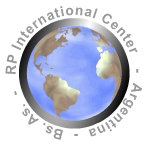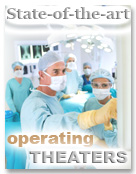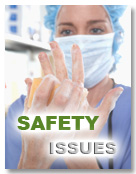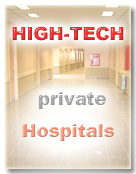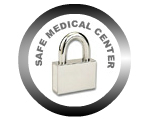
- RP Specialized in:
- Plastic Surgery in Argentina
- Treatments
- Breast Implant Surgery
- Rhinoplasty
- Vaser® Lipo System
- Liposuction
- Eyelid Surgery
- Tummy Tuck
- Breast Lift
- Facelift
- Lifting the Tip of the Nose
- Breast Reduction
- Double Chin Surgery
- Eye Shaping Surgery
- Chin Augmentation
- Ear Surgery
- Mentoplasty
- Eyebrow Lift
- Mini Facelift
- Cantopexy
- Deep Chemical Peel - Resurfacing
- Plastic Surgery Information
- Plastic Surgery Costs
- Cosmetic Procedures
- Hair Transplant
- Dermatology
- Phlebology
- Related information
- Related Links
- Web Directories
- Free Quotation
- Webmaster
» Double Chin Surgery - Plastic surgery in Argentina
Table of Contents:
- Pictures Before and After
- General Information: risks, anesthesia, recovery, pre-operative tests, etc.
- How to get a quote - Photographs necessary - Requirements.
» General Information: risks, anesthesia, recovery, pre-operative tests:
What does this surgery involve?
According to the type of double chin, there are 2 types of procedures: "Simple Double Chin" and "Full Double Chin". Full Double Chin Surgery is performed on patients with large double chins, with a considerable amount of excessive, hanging skin and flaccid fat in the area. In these cases the fat in the double chin is liposuctioned and then the excessive skin is removed and a lift procedure is performed on the area. The incisions are made behind the ears.
"Simple Double Chin" surgery is performed on patients with smaller double chins, with little hanging skin and fat. This procedure consists in liposuctioning the double chin and, only if required, a small incision is made under the chin (approximately 1 to 2 cm long) to fully smooth out the area, adjusting the lax muscle (which creates 2 vertical reins in the neck). No lift procedure is required in the area.
Are there any risks? Which complications may arise?
All surgeries involve Risks:
By giving you all the information you need to make a decision, including information on the risks involved, we show our respect for you and allow you to have the last say in all matters concerning your surgery. We also believe that this speaks volumes about RP Medical Center, about who we are and how we work. It is our responsibility to provide you with all necessary information. We consider that Quality goes hand-in-hand with Responsibility. All patients have a right to be explained how the surgical procedure will be performed, together with the potential risks and complications (which are not caused by a Physician’s errors or malpractice, but which derive from the surgery itself or cannot be anticipated), and the advantages and disadvantages of certain techniques, so that they can think it over and make a balance before making any final decision.
Any surgical procedure has risks (whether an optional surgery, which you choose to undergo, or an emergency surgery); some risks are common to all surgical procedures and others are specific to each type of surgery. No surgery is exempt from risk. A plastic surgery is, after all, a surgery. Risks (each under different incidence percentages; see below) range from post-surgery complications which can be secondarily solved (bad scarring, seroma, skin necrosis, etc.) to severe and fatal complications such as reactions to anesthesia, pulmonary embolism (blood clots or "small blood balls" which could migrate to the heart and block the pulmonary artery causing severe injuries or even death), among others.
In 1997, the results of a survey were disclosed in the United States, based on 400,675 surgical procedures involving Plastic Surgery and Surgical Repair, where 7 deaths were found. The rate of severe complications (hypotension, hematoma, infection, hypertension episodes, sepsis) was 0.47% (1 case every 230 patients). One death occurred every 57,000 patients, that is, a mortality rate of 0.0017%; slightly less than 1 death every 57,000 patients. The survey documented the approximate safety level for plastic surgeries conducted by certified plastic surgeons in authorized facilities in the US, during those years. Another survey conducted in the United States (from 1994 through 1998) further accounted for deaths occurred after Liposuctions. Survey findings reported one death every 5,000 patients, which represents a mortality rate of 0.02 % and 20 deaths every 100,000 liposuctions. The main cause of death was pulmonary thromboembolism.
Risks must be minimized by taking all appropriate preventive measures and complying with certain rules and requirements, including the requirement for pre-surgery tests, pre-operative and post-operative indications, the practice of surgeries in the proper facilities (which must be fully-equipped to cope with any inconveniences), patients’ full medical history, and their compliance with the Physicians’ guidelines after the surgery. It should be recalled that complications and risks may arise even where all precautions were taken and even if the patient is healthy. Given that these complications are not predictable, they may affect the patients of even the best surgeons in any country of the world, despite any precautions taken to reduce potential risks.
What kind of anesthesia we use
Breast implant surgery is performed under local anesthesia combined with a sedative or with general anesthesia. In both cases the patient does not feel anything.
Is there any scarring?
The scars are invisible as they are hidden behind the ears and under the chin in a natural skin fold.
What are the foreseeable results and how long do they last?
This surgery defines the neck to give the patient a younger and more attractive appearance. When the chin is not very prominent, or is retracted, Double Chin surgery can be combined with a Mentoplasty or Chin Implant to improve the outline and profile, giving the look of a stronger personality.
What precautions should be kept in mind after the procedure? When can I resume my everyday activities?
Post operation considerations
The first 48 hours require total bed rest in a semi-seated position. Recovery in "Simple Double Chin" cases is quick and the patient can resume normal activities in less than 48 hours. In "Full Double Chin" cases where a lift procedure was also performed, the patient will be able to walk within 1 or 2 days and, during the first week, may only engage in light activities. Especially during the first week, the patient should rest thoroughly and allow the body to allocate energy to recovery. Most of the patients go back to work 10 or 15 days after the surgery. Stitches are removed mostly between the 5th and 7th day. Some may stay in to be removed after the 10th day. The inflammation of the area will last around 3 weeks.
If I live out of town, how long should I stay in Buenos Aires?
The total stay in Buenos Aires for a full or extensive double chin surgery is 10 nights, 11 days. For a simple or small double chin surgery, the stay would last 8 nights and 9 days. If you agree to have the stitches removed by a doctor you trust in your hometown, the total stay is 8 nights and 9 days, provided the post-operation stage is normal. Stitches will be removed after the 7th day of the post-operation stage.
Which are the required pre-surgical tests?
It is necessary to undergo the following pre-surgical tests within 1 month before the date of surgery:
- Blood test: hemogram, blood sugar, creatinin, hepatogram, clotting time, serology HIV.
- Cardiology: ECG and surgical risk.
Mandatory pre-surgical instructions:
- Put off smoking 1 month in advance (all smoking patients have an increased risk of skin suffering in the area being operated on and of a delayed healing of scars).
- Discontinue Aspirin intake (Acetyl salicylic acid) 1 month in advance.
- Discontinue Vitamin E intake 1 month in advance.
- Apply anti tetanus vaccine.
- Anticoagulated Patients: Consult your hematologist to change treatment schedule.
» Privilege good results over cost savings.
Go for quality.
» How to get a quote - Photographs necessary to undergo a surgery - Stay - Requirements:
To request the right quote and provide all necessary information, go to: "How to travel to undergo a surgery", and read "Step No. 1", "Make arrangements for a surgery by following these easy steps."
Photographs required for Double Chin surgery: Please send 5 photographs of the face: 1 frontal photo, 1 of both profiles and one of both ¾ profiles. It is important that the photographs be full neck and head shots.
Stay required in the case of Double Chin Surgery: for a full or extensive double chin surgery is 10 nights, 11 days. For a simple or small double chin surgery, the stay would last 8 nights and 9 days. For further information on stay days, minimum stay, and schedule, among other matters, go to "How to travel to undergo a surgery" , read "Step No. 3", " Make arrangements for a surgery by following these easy steps."
Hospitalization: Not required. After the surgery, a 4-hour recovery period at the clinic is required. You may then move to your place of accommodation.
» Why are photographs necessary?
Not only are photographs necessary to avoid paying for an unnecessary and more expensive surgical procedure, but also to determine whether the surgery for which you have come to us is the best type of surgery for you. Photographs are essential for our Physicians to analyze your case, to know how to proceed and offer you the personalized treatment that sets us apart. Your photographs also enable us to make a more precise quote.

